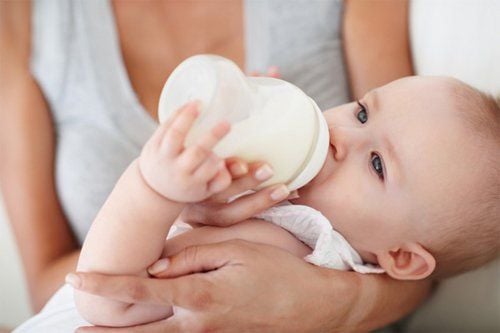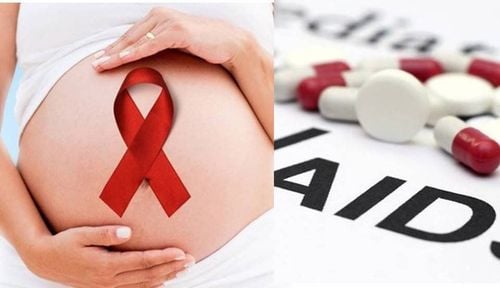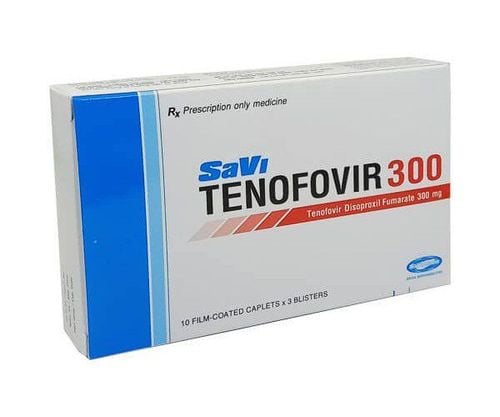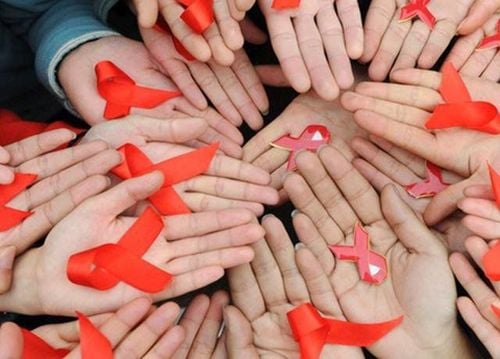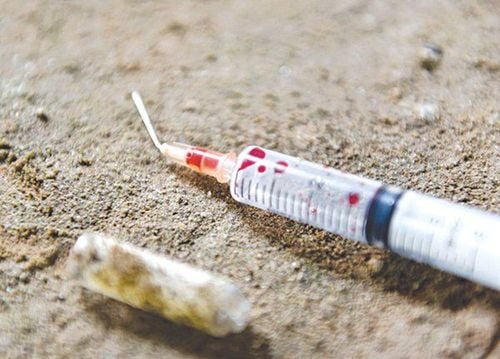This is an automatically translated article.
HIV transmission in young children is mainly poisoning from the mother. According to statistics, 90% of children are infected with HIV from their mothers before, during and after birth. When children are infected with HIV, the progression to AIDS is often faster than in infected adults.
1. HIV transmission routes in children
Infants and young children can also be infected with HIV, so how is HIV in children transmitted? Accordingly, children can be infected with HIV through three ways from mother to child, through blood and unsafe sex. In which, the route of HIV transmission in young children is mainly vertical infection from the mother:
According to statistics, during pregnancy, during childbirth and after birth, 90% of children are infected with HIV from their mothers. The risk of HIV infection in a baby born to an untreated HIV-infected mother during pregnancy is 13% - 39%. Meanwhile, HIV-infected mothers received antiretroviral therapy for 6 months, the risk decreased to 66%. In the case of twins, the baby born first has a higher risk. Cases of children with longitudinal HIV infection from their mothers are divided into two risk groups:
The first group: About 20%, the incubation period is short, the first symptoms are 1 month early, the average is after 4 months. Second group: Longer incubation period, average first symptoms after 6 years, every 8% of children over 1 year old in this group become AIDS every year. The mother has a high risk of transmitting the disease to her baby when: decreased peripheral CD4 (in the mother's blood), prolonged labor, premature rupture of membranes, high P24 antigen in the mother's blood, high HIV virus concentration in the mother's blood. The more severe the maternal disease, the higher the risk of HIV infection in the infant. Breastfeeding: High levels of virus in the mother's blood are a risk factor for transmission through breast milk. Therefore, if you breastfeed your baby, you can transmit HIV in the baby.
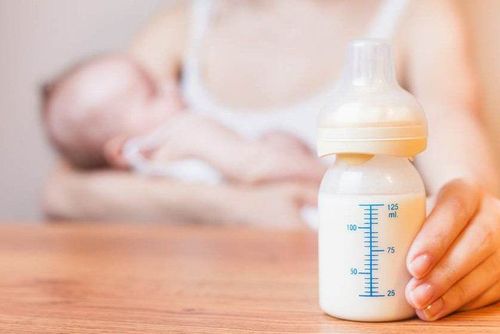
Nuôi con bằng sữa mẹ là một trong những con đường lây nhiễm HIV ở trẻ em
2. Evolution of HIV in children
The course of HIV in children is similar to that in adults, except that the progression to AIDS in children is faster than in adults.
2.1. Primary Infection After a child is exposed to a source of HIV infection through scratches or mucous membranes, the HIV virus enters and begins to multiply in large numbers.
At this stage, symptoms appear including:
Inflammation, swelling. For about 2 to 4 weeks after contracting the HIV virus, young children may experience flu-like symptoms, mild fever, about 37.5 - 38.5 degrees Celsius, and fever often lasts. Children may also experience headaches, weakness, and swollen glands, especially in the neck and groin, about 1 month after contracting the virus. Children show signs of fatigue and drowsiness, vomiting, and diarrhea due to an immune system response. However, in some children these symptoms may not be present, and routine screening tests cannot identify the disease, so this stage is also known as the "window" period.
2.2. Asymptomatic stage HIV development in young children during this stage may not show any symptoms, but in fact the HIV virus continues to thrive.
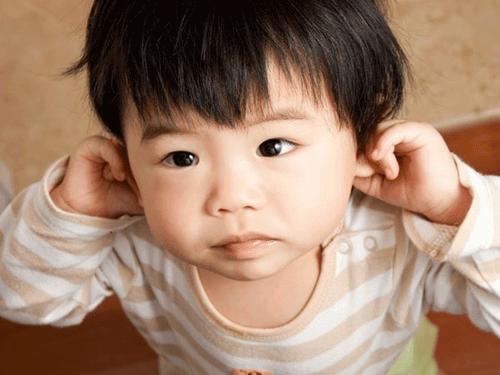
Giai đoạn không triệu chứng ở trẻ, HIV phát triển mạnh mẽ
2.3. Symptomatic phase In this stage, the number of viruses continues to increase rapidly, attacking and destroying the cells of the strong immune system and weakening the body. This stage, also known as AIDS, is the final stage of HIV infection. In young children, this stage usually occurs more quickly than in adults with HIV infection.
Symptoms of the disease at this stage include:
Children lose weight. Mouth ulcers, pruritic papules, recurrent upper respiratory tract infections such as sinusitis or ear infections. Swollen lymph nodes all over the body with fever. Occurrence of persistent diarrhea. The immune system is almost completely destroyed, so children can easily die from opportunistic infections such as meningitis, pneumonia, enteritis or lymphoma...
3. HIV treatment in young children
Treatment of HIV in young children is to use antiretroviral drugs to prolong the time it takes for HIV-infected children to become AIDS.
Indications for treatment in children:
HIV infection with clinical symptoms. HIV infection with moderate to severe immunodeficiency (based on CD4 count) HIV infection with > 5,000 - 10,000 RNAcopies/ml. Babies born to mothers with HIV in the first 6 weeks. Treatment includes: Reverse transcriptase inhibitors. There are 2 types: With 1 nucleoside-like structure and without 1-nucleoside structure
Treatment of opportunistic infections: Depending on the cause leading to the opportunistic infections to use drugs and appropriate treatment methods, reduce the rate mortality rate, prolonging life time for children.
Prophylactic treatment for children born to HIV-infected mothers: The risk of HIV transmission from an HIV-infected mother to her child is 30-40%. Therefore, there is a need for early prophylactic treatment of infants born to mothers with known HIV infection. At the time of pregnancy and after childbirth, to prevent HIV transmission to the baby, AZT should be treated.
Care: Hygiene for the child's body. Strengthen nutrition, supplement vitamins A, B, C to increase the immune system for children.
Early treatment of bacterial infections in children if any.
To register for examination and treatment at Vinmec International General Hospital, you can contact Vinmec Health System nationwide, or register online HERE.
SEE ALSO:
3 possible times of mother-to-child HIV transmission Prevention of mother-to-child HIV transmission Caring for and nurturing infants born to HIV-infected mothers




